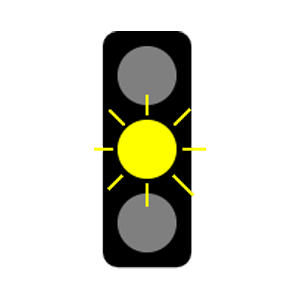2025 South Dakota Permit Test 17
The following questions are from real DMV written tests. These are some of the actual permit questions you will face in South Dakota. Each permit practice test question has three answer choices. Select one answer for each question and select "grade this section." You can find this button at the bottom of the drivers license quiz. For a complete list of questions and answers for South Dakota please visit https://cheat-sheets.dmv-written-test.com/en/south-dakota/car.
Number of Tests
Number of Question
Passing Score
17. When entering traffic after being parked at a curb, you:
Explanation
Any time that you merge into city or highway traffic, you should wait for a gap in traffic large enough for your vehicle to get up to the speed of other traffic.
18. You should not use your horn:
Explanation
When driving near a blind pedestrian, using your horn may be dangerous. Yield to the pedestrian and proceed when it is safe to do so.
19. If a tire blows out, you should:
Explanation
If a tire suddenly blows out while you are driving, hold the steering wheel tightly and keep the vehicle going straight.You should slow down gradually, taking your foot off the gas pedal and using the brakes lightly. Do not stop on the road if at all possible. Pull off the road in a safe place.
20. Motorcycles, scooters, and mopeds are not easy to see; therefore, you should:
Explanation
Motorcycles can be easily hidden in a vehicle’s blind spot or missed in a quick look due to their small size. Drivers of cars must always be alert and looking for motorcycles, mopeds, and scooters.
21. A flashing yellow light at an intersection means you should:

Explanation
When encountering a flashing yellow light at an intersection, you should slow down and proceed with caution. You do not need to come to a complete stop when approaching a flashing yellow light.
22. When you are behind a motorcycle, you should:
Explanation
When following a motorcyclist, allow for at least a three- to four-second following distance. Motorcycles can stop quickly and following them too closely endangers your life and that of the motorcyclist. If the motorcyclist should fall, you need extra distance to avoid the rider. The chances of a fall are greatest on wet and icy roads, gravel roads, and metal surfaces such as bridges, gratings, and streetcar or railroad tracks.
23. To pass on a two-lane road, you should:
Explanation
It can be hard to judge the speed of oncoming vehicles. They do not always seem to be coming as fast as they really are. Always be sure you can safely change lanes when passing on a two-lane street. If you are not sure of an oncoming vehicle's speed, wait to pass until the oncoming vehicle has passed and you are sure there is enough space for you to change lanes safely.
24. You are entering a freeway. Check traffic on the freeway by:
Explanation
When entering any roadway, you must be aware of traffic conditions. Use your side mirror and look over your shoulder to help you see and anticipate traffic when entering a freeway.
25. If bad weather makes it difficult for you to see clearly, you should:
Explanation
